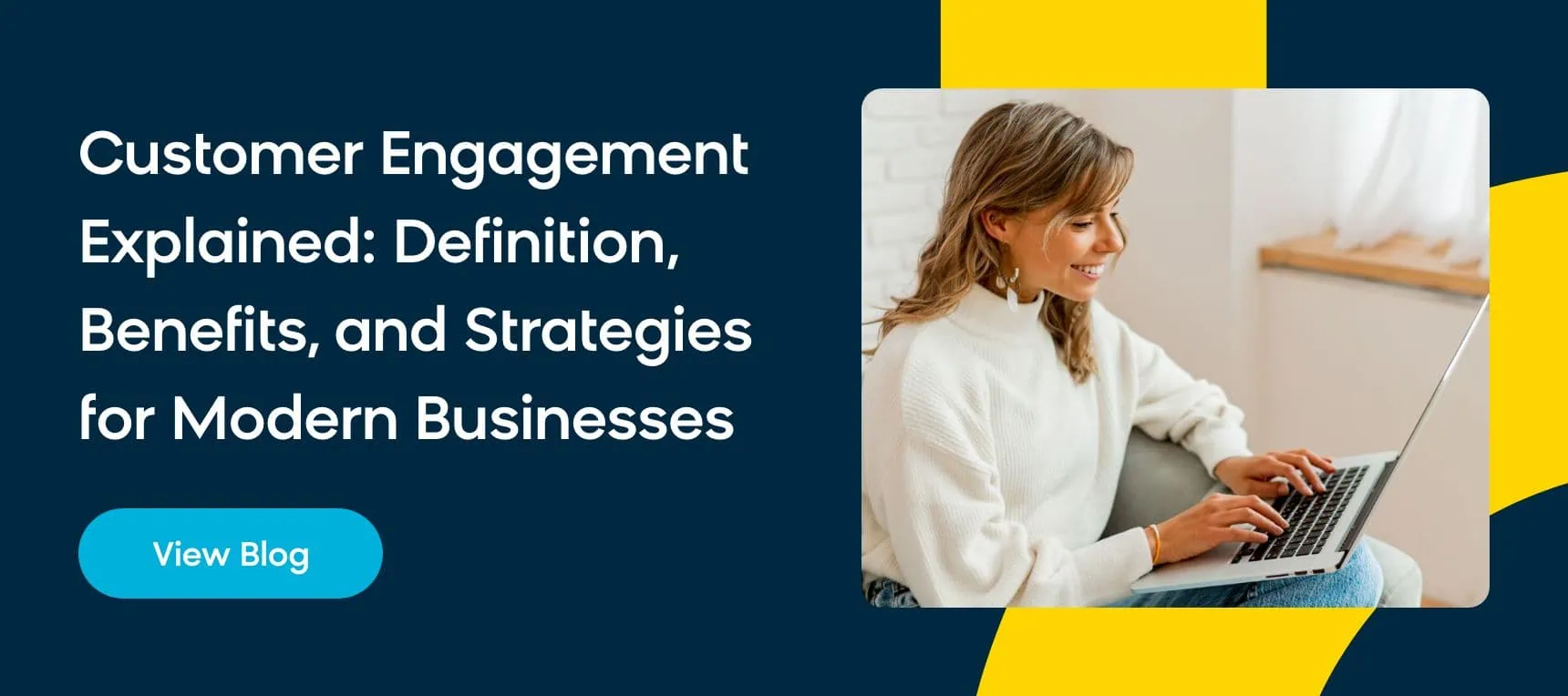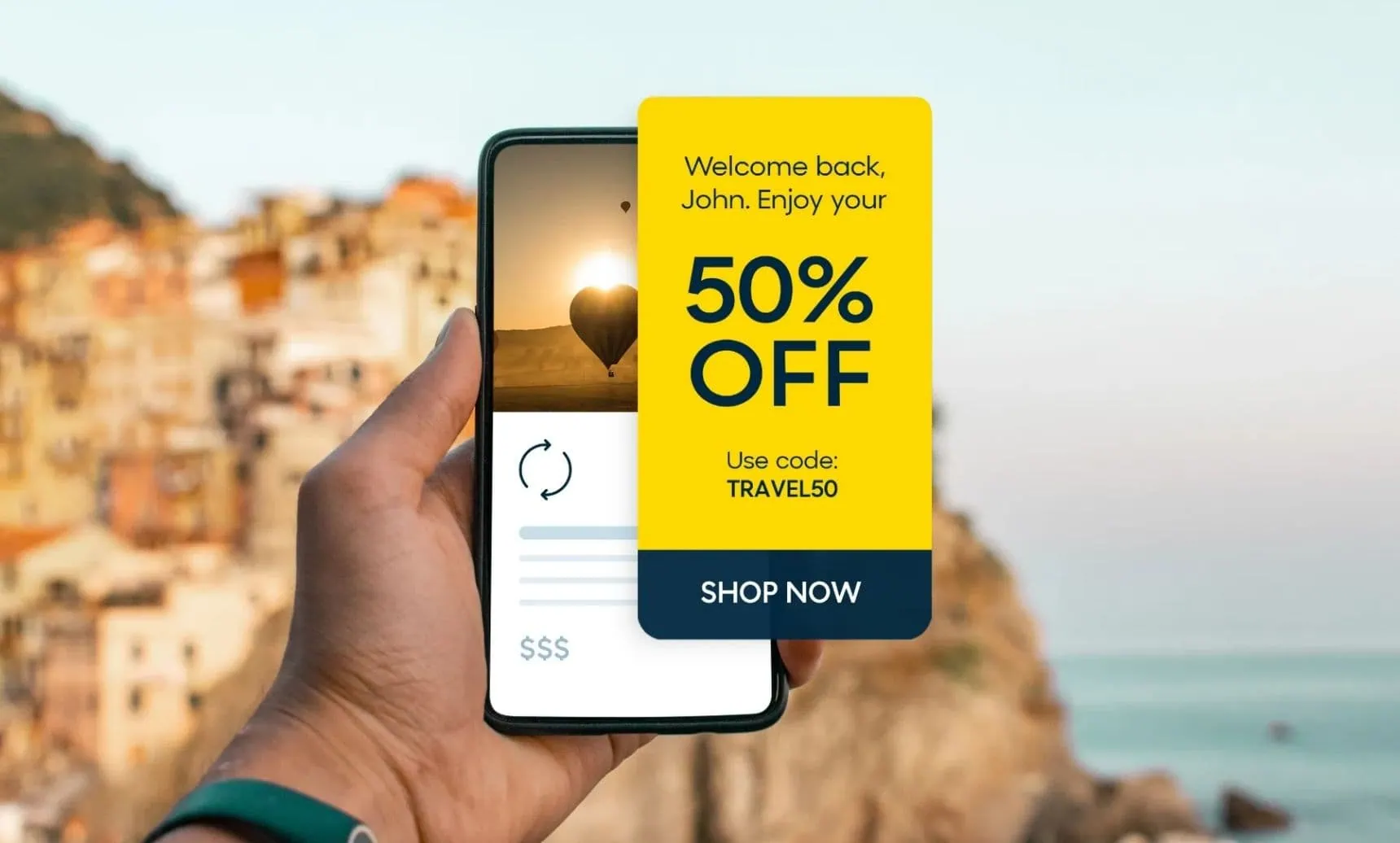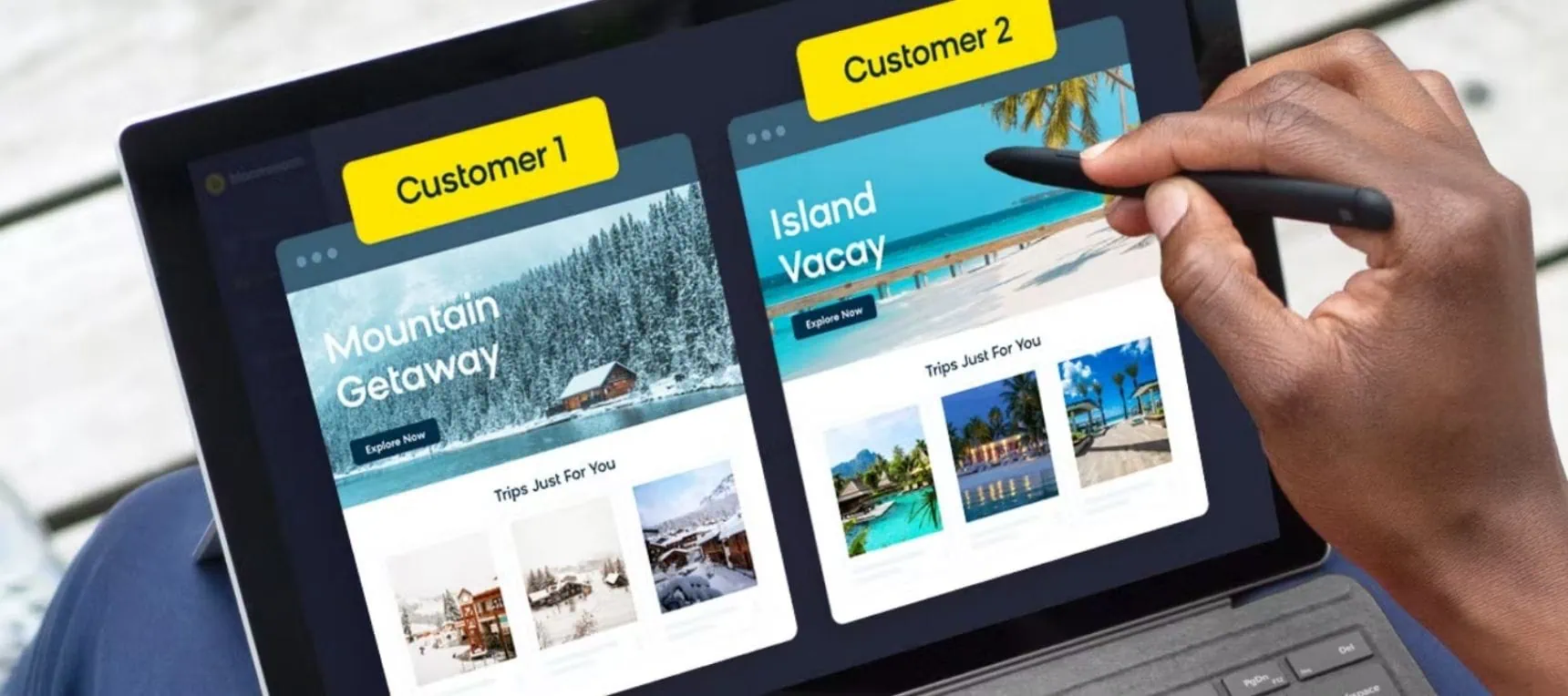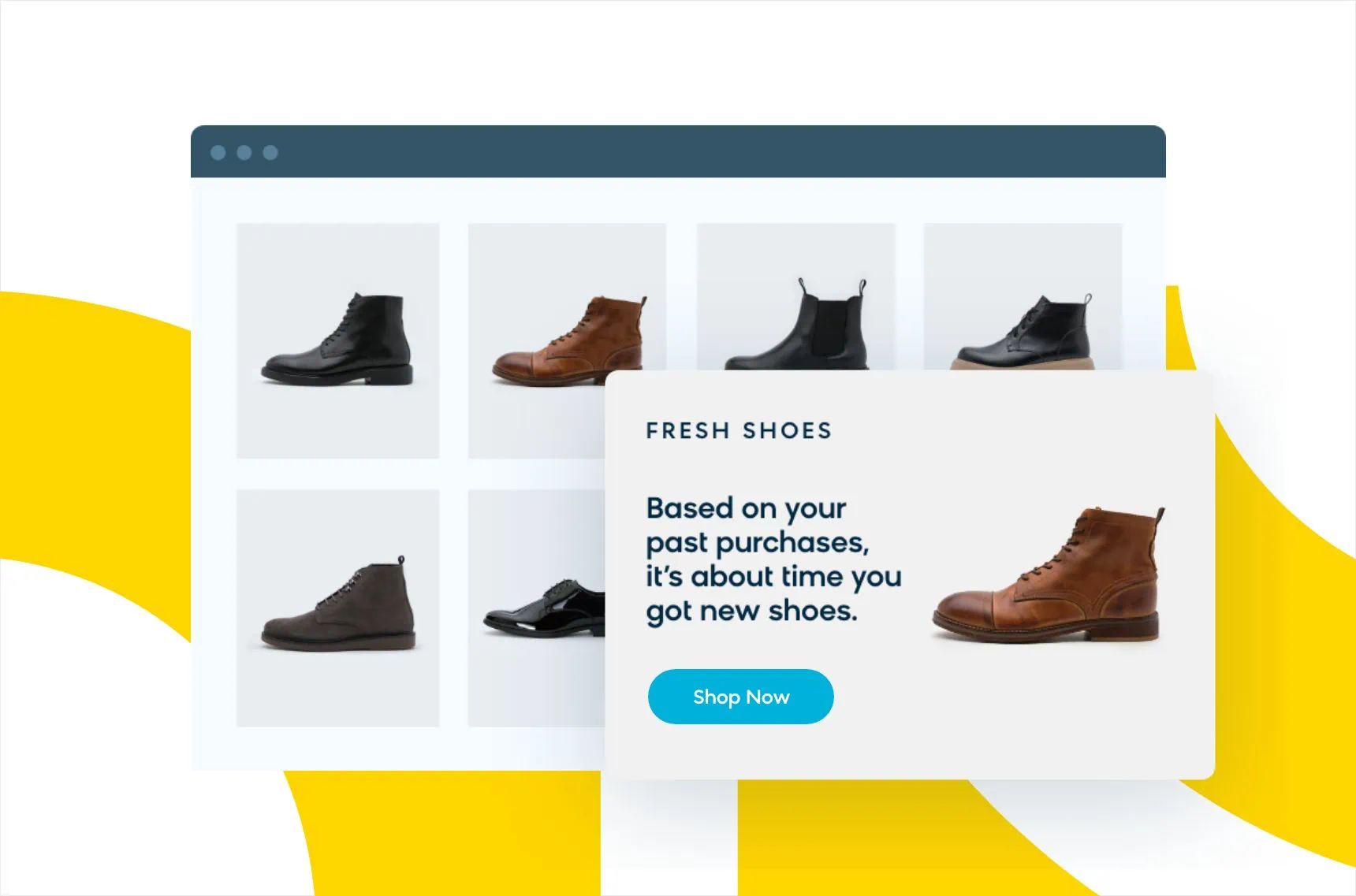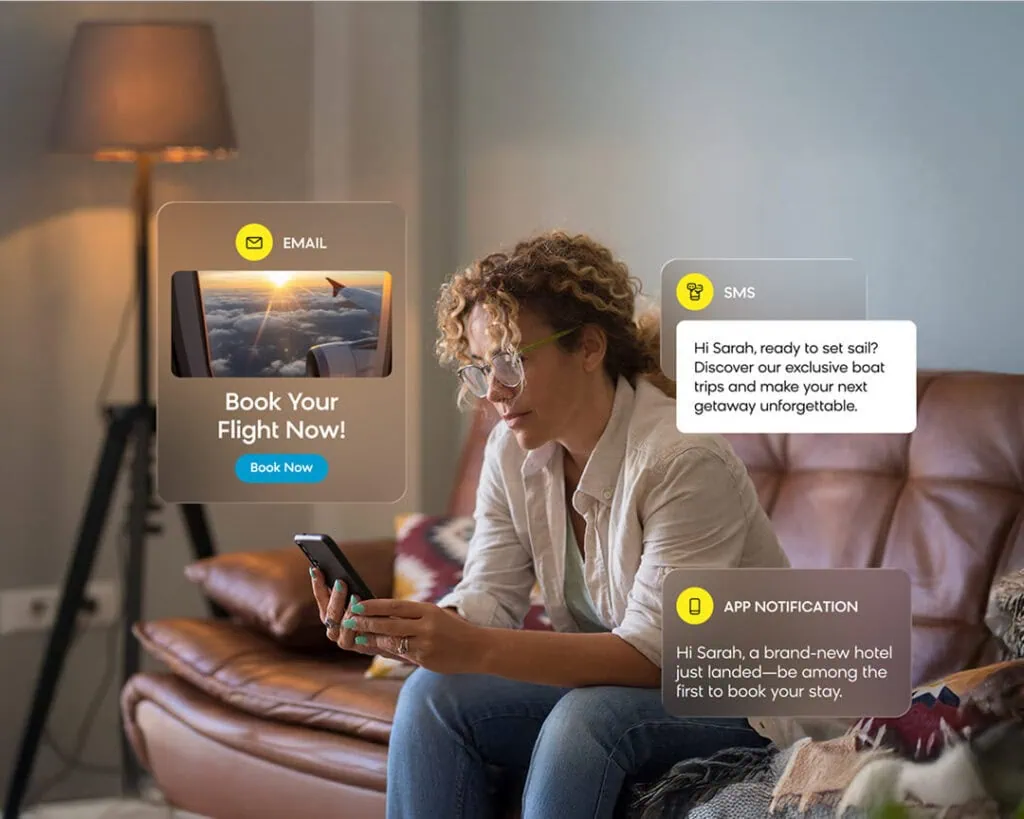In today’s ever-competitive market, businesses are continuously striving to engage customers in meaningful ways.
It’s not enough to simply set up a business and wait for customers to come to you. Fostering valuable and persistent customer engagement is a challenge that every brand needs to focus on and keep in the foreground of their business strategy. It’s more than a recommended best practice — it’s a priority for any business aiming for sustainable growth.
If you’re looking to increase your customer engagement and orchestrate significant relationships with your audience, you’ve come to the right place. In this blog, we’ll delve into the best strategies to boost customer engagement and explain how you can incorporate them into your overall strategy.
Whether you’re operating an ecommerce store, launching a new product, or trying to stay ahead of your competitors, these tactics can help you take your customer engagement to the next level in 2025.
What Is Customer Engagement?
Customer engagement is the process of building relationships with customers through meaningful interactions. The term covers the vast scope of touchpoints that brands have with their audience — everything from emails campaigns and product recommendations to social media ads and loyalty programs.
It’s the meeting point between the customer’s needs and preferences and the various platforms that your business uses to engage with them to build loyalty, credibility, and customer satisfaction. That’s why your customer engagement strategy needs to be informed by the knowledge and insights your brand has gained from past interactions with your audience and what you believe they expect from your company.
Read This Next: Customer Engagement Explained
Why You Need a Customer Engagement Strategy
Developing a customer engagement strategy is vital for businesses to create long-lasting relationships with their customers. If extending your customer relationships isn’t one of your primary goals, you’re not setting your business up for success.
65% of a company’s business comes from existing customers. With more than half of all purchases likely to be repeat buyers, your brand needs to focus on nurturing a loyal audience and offering them as many ways to reconnect and engage with your business as possible.
A customer that chooses your business, completes a purchase, and never interacts with your business again is a missed opportunity. Yes, that initial sale is important, but fostering a sense of loyalty is the real key to business success.
By investing in customer engagement, businesses can boost loyalty and trust, which are the two main ingredients in customer satisfaction, customer retention, and customer lifetime value — metrics that every brand needs to pay attention to and work toward perfecting.
Read This Next: The Ultimate Guide to Customer Lifetime Value
Customer Engagement Strategy Framework
Before diving into the 5 specific ways to boost engagement, it’s essential to understand that an effective customer engagement strategy requires a systematic approach rather than isolated efforts. A successful framework consists of four core pillars that work together to create lasting customer relationships:
- Data Foundation: Collecting and unifying customer data across all touchpoints to create a comprehensive view of each individual
- Personalization Engine: Using insights to deliver relevant, timely experiences that resonate with specific customer needs and preferences
- Multi-Channel Orchestration: Coordinating consistent messaging and experiences across all customer interaction points
- Continuous Optimization: Regularly measuring, testing, and refining engagement approaches based on performance data and customer feedback
Bloomreach’s approach to each pillar emphasizes real-time data activation, AI-powered personalization, and seamless integration across marketing channels. This strategic foundation ensures that every tactical implementation delivers maximum impact on customer loyalty and retention.
5 Proven Ways to Boost Your Customer Engagement Strategy
Here are the 5 proven strategies that can help increase your customer retention, satisfaction, and ultimately your revenue:
1. Map Out and Orchestrate Your Customer Journey
To engage customers in meaningful ways, you first need to know where, when, and how your customers interact with your business. Developing and implementing a successful customer engagement strategy starts with an in-depth understanding of your customer base and their touchpoints with your brand.
A helpful jumping-off point is to map out the ideal customer experience and pinpoint any notable channels they prefer, obstacles they hit, or challenges they may encounter.
Starting with a top-level examination of your customer journey — the brand awareness phase, the consideration phase, the decision phase, the retention phase, and the advocacy phase — can provide insights into your audience’s behaviors and needs, helping you identify potential opportunities for better customer engagement.
It’s all about identifying where your customers tend to engage with your brand so you can optimize their interactions and orchestrate the ideal customer journey.
Read This Next: The Ultimate Guide to Journey Orchestration
2. Make Your Data Work for You
Data is the fuel you need to craft great customer engagement, so collecting it correctly is incredibly important. It’s the glue that holds your customer engagement marketing efforts together and turns touchpoints into valuable, profitable interactions.
A consistent customer experience across channels, relevant product recommendations, tailored communications — they all rely on data. And there are a lot of sources, types, and data sets you need to tap into to get the data you need, including:
- Events: behavioral data from a user’s actions on your website, in an app, or on a mobile browser
- Customer attributes: all the important information like names, addresses, and contact details of your customers
- Transactional data: purchases, returns, and other info from ecommerce systems
- Customer service data: live chat data, the number and length of interactions, frequency, and NPS scores
Not only do you need to gather and organize all this transactional, demographic, and behavioral data, but you also need to link it to individual customers. It’s the only way you can craft a single customer view with specific profiles for every individual person who interacts with your business.
Leveraging this massive amount of information is no small task, but with the right tools (like a customer data platform), you can make it work to your business’ advantage and increase your customer engagement.
Read This Next: What’s a Customer Data Platform?
3. Personalize Your Customer Interactions
Once you’ve gathered all the relevant data you need, you can start personalizing every step of your customer experience with targeted, curated interactions.
This is the gold standard of customer engagement strategies and a sure-fire way to increase customer satisfaction. Personalization is no longer a lofty goal for digital commerce — it’s a necessity.
Modern consumers expect brands to cater to their individual needs, preferences, and behaviors. Research from McKinsey shows that 71% of consumers expect personalized interactions, and 76% get frustrated when this doesn’t happen. Additionally, companies with faster growth rates derive 40% more revenue from personalization than average players.
And there is a broad range of personalization tactics you can employ to reach your audience, including:
Personalized Content
It’s a safe bet to assume that your customers are bombarded with generic, irrelevant content and promotions from multiple brands. Personalized messaging allows businesses to connect with customers on a deeper level and improves the likelihood of their message resonating with them.
From personalized email content to individualized messaging in your customer loyalty program, a tailored approach to content can make your brand stand out in the best way possible.
Personalized Product Recommendations
There’s a huge difference between recommending the most-bought products or the top-viewed items and offering a curated array of products that your customer would most likely purchase based on their preferences and previous transactions.
When you provide tailored recommendations, you’re proving that you care about your customer’s specific needs, which goes a long way in establishing customer loyalty.
Personalized Experiences
Customers want to feel valued and appreciated when interacting with a brand, and personalized experiences can create a lasting emotional connection that makes customers feel heard and understood. Small adjustments to their customer experience can make a big impact, such as displaying unique content when they visit your site that caters to their preferences.
When you chart an individual customer journey for each customer, you can exceed customer expectations and keep them loyal to your brand.
4. Implement Omnichannel Customer Engagement
Successful engagement strategy development requires coordinating experiences across all customer touchpoints. An effective omnichannel approach ensures consistent messaging and seamless transitions as customers move between different interaction channels.
Key channel integration best practices include:
- Unified messaging: Ensure brand voice and promotional offers remain consistent across email, web, mobile app, and social media channels
- Cross-channel data sharing: Use behavioral data from one channel to inform personalization efforts on another
- Progressive profiling: Build comprehensive customer profiles by combining insights from multiple touchpoints
Bloomreach’s omnichannel capabilities enable brands to orchestrate cohesive customer experiences that feel natural and intentional, regardless of where the interaction begins or continues. This strategic coordination transforms individual channel tactics into a powerful, unified engagement framework.
5. Prioritize Exceptional Customer Service
Creating positive interactions with customers is a foundational requirement for a successful business, and customer service is one the best tools to achieve this goal. Good customer service can influence how customers perceive a brand, and exceptional service can create long-lasting brand loyalty.
Positive Interactions Build Trust
When customers have a positive experience with your company, they’re more likely to feel satisfied with their purchase and return again in the future. It creates a trustworthy image of your brand, reassuring your customers that they are taken care of when they choose your business.
That’s why it is vital for brands to constantly work toward refining their customer experience and offering the best service possible to their audience. Identifying their needs and meeting their demands as they develop is the easiest route to a strong customer relationship.
Customer Service Sets the Tone for Future Engagement
The way businesses handle customer complaints and issues can make a difference in whether a customer decides to remain engaged. By providing excellent customer service, businesses can demonstrate a commitment to their customers’ satisfaction and provide peace of mind that their issues will be dealt with in a timely manner.
Customer Feedback Is a Valuable Tool
Customer service is not just about solving complaints or problems — it’s also about seeking feedback and making improvements. Inviting customer feedback helps businesses increase customer engagement, improve their product offerings, and helps build trust and credibility with their customers.
Measuring Your Customer Engagement Strategy Success
An effective customer engagement strategy relies on the activation of real-time data, which means your insights and analysis needs to be proactive, coordinated, and comprehensive.
It’s not enough to simply track customer engagement from a bird’s eye view. Every time a customer interacts with your brand, you get valuable data that can be incorporated into your strategy to inform your next marketing move.
With new data always available to optimize your customer experience, your customer engagement strategy can’t be a set-it-and-forget-it solution. You need to keep assessing how your customers are interacting with your brand, where improvements can be made, and what adjustments can inspire your audience to become loyal customers.
Start by identifying key performance indicators (KPIs) that align with your business goals. Essential metrics for measuring engagement strategy success include:
- Customer Lifetime Value (CLV): Measures the total revenue potential of customer relationships over time
- Net Promoter Score (NPS): Gauges customer satisfaction and likelihood to recommend your brand
- Customer Retention Rate: Tracks the percentage of customers who continue engaging with your brand over specific periods
By tracking key metrics, you can gain insights into how well your engagement efforts are resonating with your customers and make strategic decisions based on performance data.
Conduct A/B Testing
A/B testing is another valuable tool for analyzing your customer engagement strategies. This involves creating multiple versions of a single variable (like an email subject line or website layout) to see which performs better.
There are endless questions you can answer with A/B testing. Which content types lead to shopping sessions? Which channels are customers more likely to engage with next? Which CTA has historically led to a purchase, and which rewards do your members prefer from your customer loyalty program?
Smart A/B testing can help you determine the best action, channel, message, and time to execute your customer’s entire experience.
Use Customer Feedback
Direct customer feedback is an invaluable resource, providing insights straight from the source. Regularly survey your customers, ask for their opinions, and use their responses to refine your customer engagement strategies.
Remember, a successful customer engagement strategy is one that evolves with the needs and preferences of your customers. Regular analysis and testing will ensure that your methods stay effective and relevant, fostering a strong bond between your brand and your customers.
Optimize Your Customer Engagement With Bloomreach
To put the best customer engagement strategies into practice, you need the right tool for the job — one that will help you manage, optimize, and personalize all your customer engagement efforts.
That’s exactly what Bloomreach Engagement, our comprehensive customer engagement platform, offers modern businesses. Engagement is an intuitive, flexible solution that unifies your marketing channels and the data that drives them, giving you everything you need to refine your customer journey and craft meaningful interactions at every touchpoint.
It combines the power of a customer data platform with native artificial intelligence, an email service provider, marketing automation, and web personalization, so you can seamlessly create data-driven marketing campaigns across all your channels.
For companies looking to take their customer engagement to the next level in 2025, it’s exactly the kind of tool you need to set your business up for success.
Interested in learning more? Watch our short video to learn exactly what Bloomreach Engagement can do to help your business grow and thrive.


